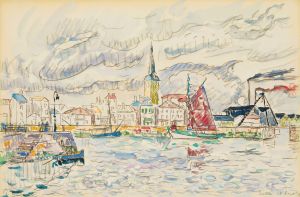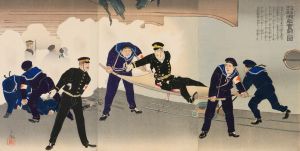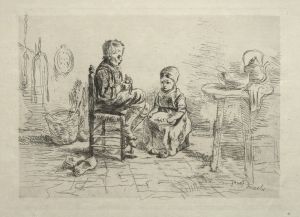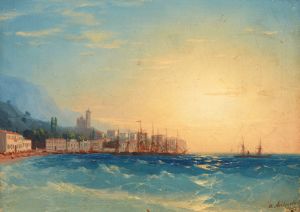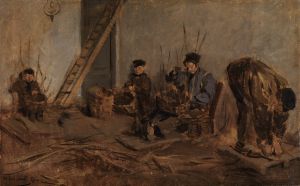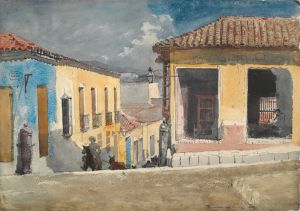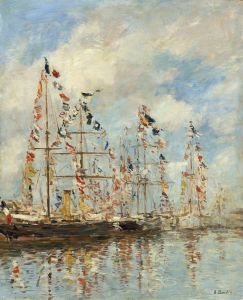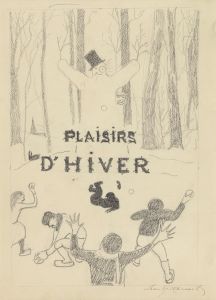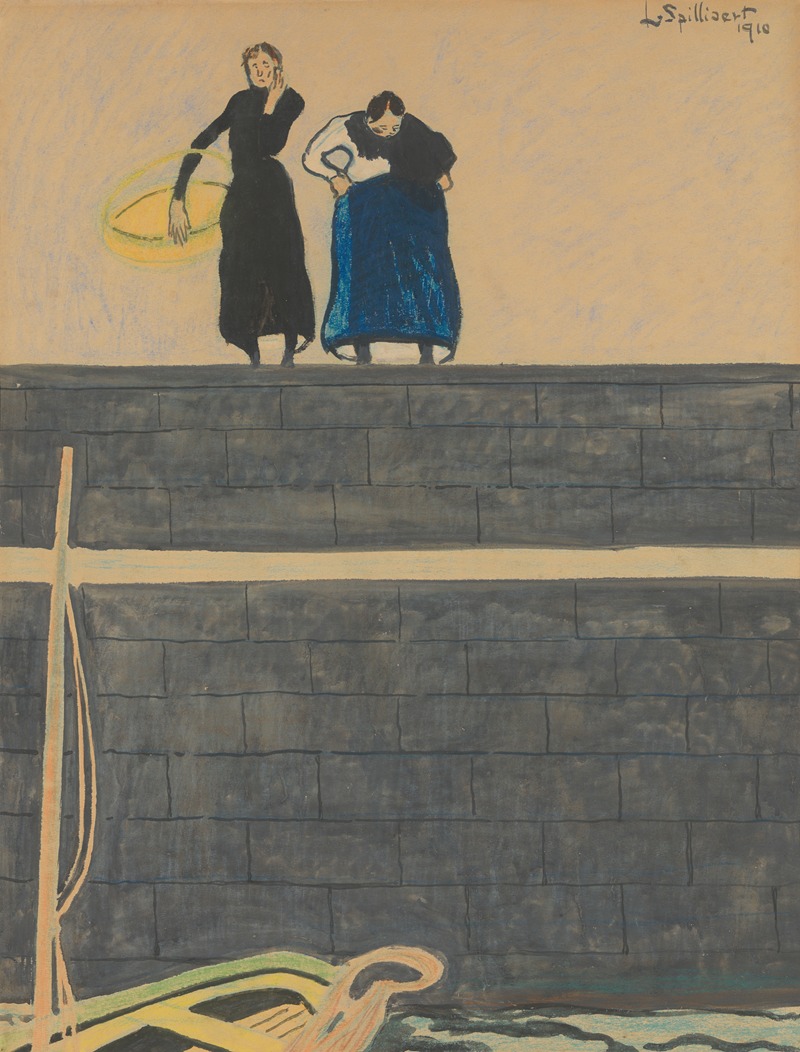
Vissersvrouwen op de kaai
A hand-painted replica of Léon Spilliaert’s masterpiece Vissersvrouwen op de kaai, meticulously crafted by professional artists to capture the true essence of the original. Each piece is created with museum-quality canvas and rare mineral pigments, carefully painted by experienced artists with delicate brushstrokes and rich, layered colors to perfectly recreate the texture of the original artwork. Unlike machine-printed reproductions, this hand-painted version brings the painting to life, infused with the artist’s emotions and skill in every stroke. Whether for personal collection or home decoration, it instantly elevates the artistic atmosphere of any space.
Léon Spilliaert, a Belgian symbolist painter, is known for his evocative and atmospheric works that often explore themes of solitude, introspection, and the mystical aspects of everyday life. One of his notable works is "Vissersvrouwen op de kaai" (Fisherwomen on the Quay), which captures the essence of coastal life and the unique atmosphere of the Belgian seaside.
"Vissersvrouwen op de kaai" is a painting that reflects Spilliaert's fascination with the sea and the people whose lives are intertwined with it. The painting depicts a group of fisherwomen gathered on a quay, a common sight in coastal towns where the fishing industry was a significant part of daily life. Spilliaert's work often features strong, expressive lines and a limited color palette, which can be seen in this painting as well. The use of muted tones and the play of light and shadow create a somber and contemplative mood, characteristic of Spilliaert's style.
Spilliaert was born in Ostend, a coastal city in Belgium, in 1881. The proximity to the sea had a profound influence on his work, and many of his paintings and drawings capture the unique atmosphere of the Belgian coast. His works often depict solitary figures in introspective poses, set against the backdrop of the sea or the empty streets of Ostend. This sense of solitude and introspection is evident in "Vissersvrouwen op de kaai," where the fisherwomen, though gathered together, seem lost in their own thoughts, perhaps reflecting on the hardships and uncertainties of their lives.
The early 20th century, when Spilliaert was most active, was a time of significant change and upheaval in Europe. The industrial revolution and the onset of World War I brought about shifts in society and culture, and artists like Spilliaert were influenced by these changes. His work often conveys a sense of melancholy and existential reflection, capturing the mood of an era marked by both progress and uncertainty.
Spilliaert's technique is notable for its use of ink, watercolor, and pastel, which he often combined to create his distinctive style. In "Vissersvrouwen op de kaai," the fluidity of these mediums allows for the subtle gradations of tone and the delicate rendering of light and shadow. This technique contributes to the painting's ethereal quality, drawing the viewer into the quiet world of the fisherwomen.
Throughout his career, Spilliaert remained somewhat of an outsider in the art world, not fully aligning with any particular movement or school. However, his work has been associated with symbolism and expressionism, and he is often compared to other artists who explored similar themes, such as Edvard Munch and Odilon Redon. Despite this, Spilliaert's work is unique in its introspective focus and its ability to convey deep emotion through minimalistic means.
"Vissersvrouwen op de kaai" is a testament to Spilliaert's ability to capture the human condition and the quiet drama of everyday life. Through his use of composition, color, and light, Spilliaert invites viewers to contemplate the inner lives of his subjects and the world they inhabit. His work continues to be celebrated for its emotional depth and its ability to evoke a sense of place and mood, making Léon Spilliaert an enduring figure in the world of art.





